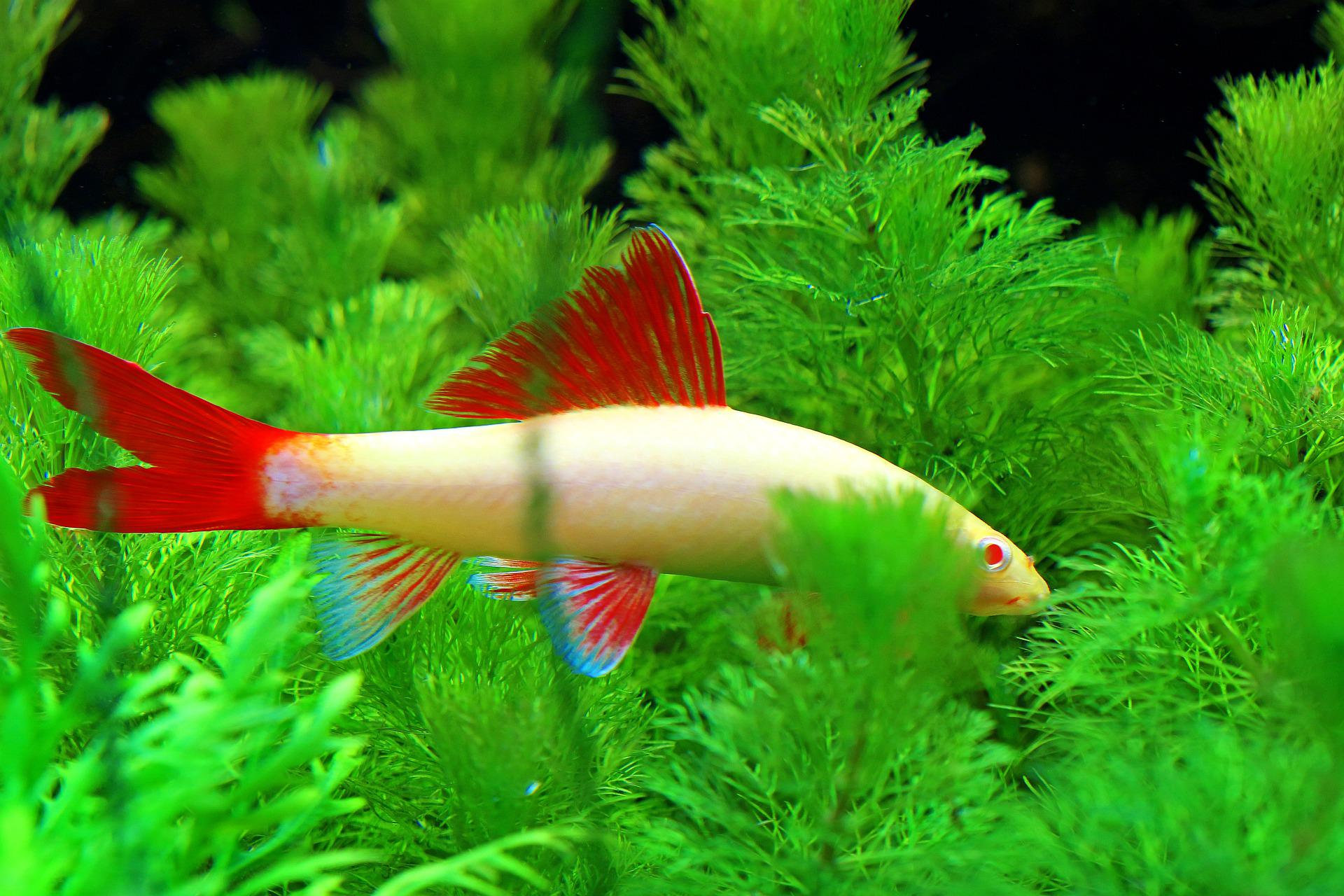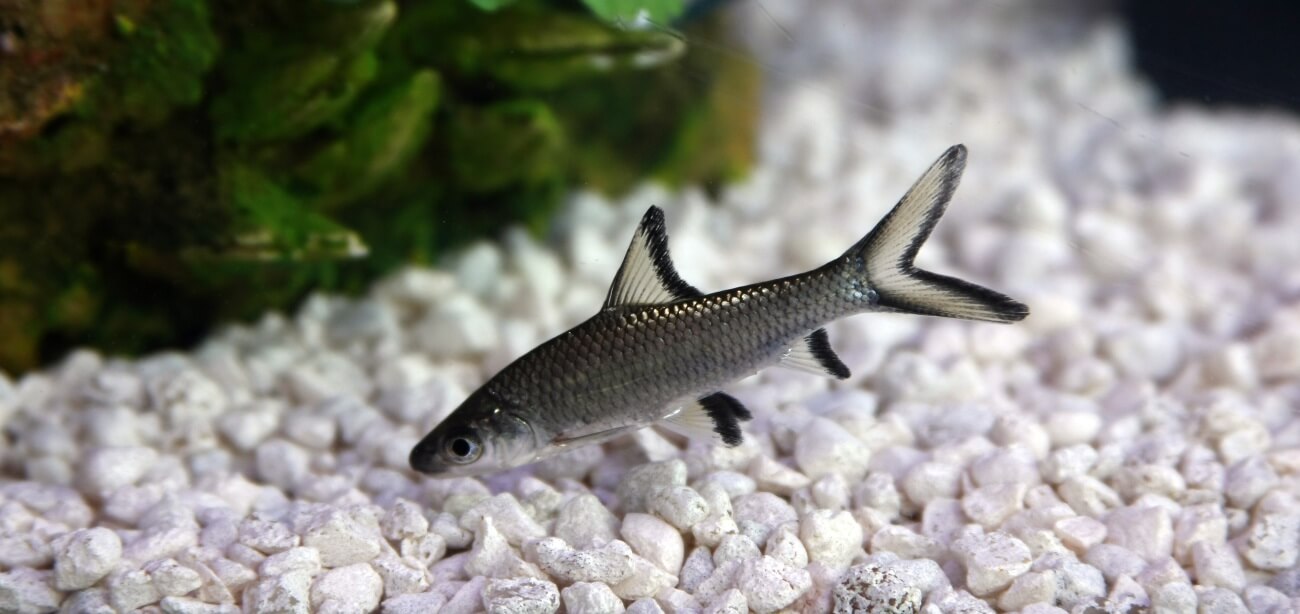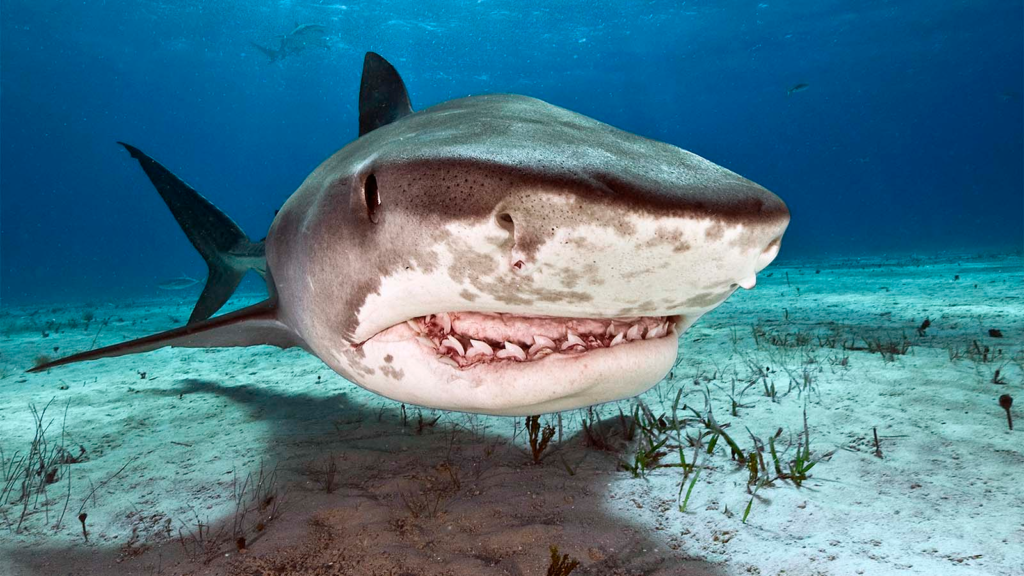Freshwater sharks can be a fascinating addition to fish tanks. They bring a unique look and active behavior that many fish keepers love.
These sharks are not true sharks, but they have similar features. They thrive in freshwater tanks and can be a great choice for hobbyists. Their sleek bodies and dynamic swimming patterns make them stand out. But, keeping them requires some knowledge and care.
Understanding their needs is key to keeping them healthy. This blog will explore popular freshwater shark species for aquariums. Learn what makes them special and how to care for them. Discover if these intriguing fish are the right choice for your tank. Dive in to find out more about these captivating creatures.
Bala Shark
The Bala Shark is a popular choice for freshwater aquariums. Known for its sleek, shiny body and active nature, this fish adds a dynamic presence to any tank. Let’s dive into the details of the Bala Shark, covering its appearance, tank requirements, and care tips.
Appearance And Size
The Bala Shark has a distinct, sleek appearance. Its body is silver with a metallic sheen, making it stand out. The fish has a torpedo-shaped body and large, pointed fins. The fins are edged in black, giving it a striking look.
Bala Sharks can grow quite large. In a well-maintained tank, they can reach up to 14 inches in length. It’s essential to consider their potential size when planning your aquarium.
Tank Requirements
Bala Sharks need spacious tanks due to their size and activity level. A tank of at least 125 gallons is recommended for a group of Bala Sharks. They thrive best in groups of five or more.
Maintain the water temperature between 72°F and 82°F. The pH level should be between 6.5 and 8.0. Bala Sharks appreciate a strong water flow and plenty of open swimming space. Include hiding spots with plants or decorations.
| Tank Size | Temperature | pH Level | Group Size |
|---|---|---|---|
| 125 gallons | 72°F – 82°F | 6.5 – 8.0 | 5 or more |
Diet And Care
Bala Sharks are omnivores, meaning they eat both plants and animals. Their diet should be varied to ensure they get all necessary nutrients. Provide them with high-quality flake or pellet food as the main diet. Supplement with live or frozen foods like brine shrimp, bloodworms, and daphnia.
Feeding Tips:
- Feed small amounts 2-3 times a day.
- Remove uneaten food to keep the tank clean.
Regular tank maintenance is crucial for Bala Sharks. Perform weekly water changes of 25-30%. Check water parameters regularly to ensure they remain stable. Bala Sharks are prone to stress in poor water conditions, so keeping the tank clean is vital for their health.
In summary, Bala Sharks are an active, engaging addition to any large freshwater tank. Their unique appearance, combined with proper care, can create a stunning aquatic display.
Rainbow Shark
The Rainbow Shark, also known as the Ruby Shark or Red-Finned Shark, is a popular freshwater fish for home aquariums. Its vibrant colors and unique behavior make it a favorite among fish enthusiasts. Below, we explore the appearance, behavior, tank setup, and feeding tips for keeping Rainbow Sharks healthy and happy.
Appearance And Behavior
The Rainbow Shark has a striking appearance. Its body is dark gray or black, while its fins are bright red or orange. This contrast makes it a visually stunning addition to any tank.
Rainbow Sharks are known for their territorial nature. They often stake out a specific area of the tank as their own. This behavior can lead to aggressive interactions with other fish, especially those of similar size and shape.
It’s best to keep them with fast-moving or larger fish to minimize conflicts. They are also bottom dwellers, spending most of their time swimming near the substrate.
Tank Setup
A proper tank setup is essential for the well-being of your Rainbow Shark. Here are some key considerations:
- Tank Size: Minimum 55 gallons
- Water Temperature: 72-82°F (22-28°C)
- pH Level: 6.5-7.5
- Substrate: Smooth gravel or sand
- Decorations: Rocks, caves, and driftwood for hiding spots
Ensure plenty of hiding spots to help reduce stress. Rainbow Sharks appreciate a well-planted tank, which offers them more places to explore and claim as territory.
Feeding Tips
Feeding your Rainbow Shark a balanced diet is crucial for their health. They are omnivores, so they require both plant and animal-based foods. Here are some feeding tips:
- Flake Food: High-quality flake food can serve as a staple diet.
- Pellets: Sinking pellets are ideal for bottom-dwelling fish.
- Frozen or Live Food: Bloodworms, brine shrimp, and daphnia are excellent choices.
- Vegetables: Blanched spinach, zucchini, or peas can provide necessary plant-based nutrients.
Feed them small amounts twice a day. Overfeeding can lead to water quality issues and health problems.
By providing a suitable environment and proper diet, your Rainbow Shark will thrive and add vibrant color to your aquarium.
Red Tail Shark
The Red Tail Shark is a popular choice for freshwater aquariums. Known for its striking appearance and active nature, it brings vibrancy to any fish tank. Below, we explore its distinct features, habitat needs, and compatibility with other fish.
Distinct Features
The Red Tail Shark stands out due to its unique coloration. Its body is a deep, velvety black, contrasted by a bright red tail. This sharp color difference makes it a captivating addition to any aquarium. It has a streamlined body and a pointed snout, which give it a sleek, agile look.
| Feature | Description |
|---|---|
| Body Color | Deep black |
| Tail Color | Bright red |
| Size | Up to 6 inches |
| Shape | Streamlined with a pointed snout |
Habitat Needs
Creating the right habitat is crucial for the health of a Red Tail Shark. They thrive in tanks with plenty of hiding places and open swimming areas. Use rocks, driftwood, and plants to create these spaces. They prefer a tank size of at least 50 gallons.
- Water Temperature: 72-79°F
- pH Level: 6.5-7.5
- Tank Size: Minimum 50 gallons
- Decor: Rocks, driftwood, and plants
Compatibility With Other Fish
The Red Tail Shark can be territorial. It is essential to choose tank mates carefully. Avoid placing them with similar-shaped fish or other aggressive species. Here are some suitable companions:
- Gouramis
- Barbs
- Danios
- Rasboras
These fish are generally fast and can avoid conflict. Always monitor their behavior to ensure harmony in the tank.

Credit: www.co2art.us
Iridescent Shark
The Iridescent Shark is a popular choice for many aquarium enthusiasts. Despite its name, it is not a true shark but a type of catfish. Known for its striking appearance and active nature, the Iridescent Shark can be a fascinating addition to your fish tank.
Physical Characteristics
The Iridescent Shark has a sleek, streamlined body. It can grow up to 4 feet in the wild but typically reaches 12-20 inches in captivity.
- Color: Silver to dark gray with an iridescent sheen.
- Fins: Long, pointed dorsal fin and forked caudal fin.
- Eyes: Large, providing excellent vision.
These fish have a unique shimmer that makes them stand out in any tank. Their lively and active swimming behavior adds life to any aquarium.
Tank Conditions
Providing the right tank conditions is crucial for the health of your Iridescent Shark.
| Parameter | Ideal Range |
|---|---|
| Tank Size | 100+ gallons |
| Water Temperature | 72-79°F (22-26°C) |
| pH Level | 6.5-7.5 |
| Water Hardness | 2-20 dGH |
They need a spacious tank to swim freely. Ensure the tank has a secure lid, as they can jump.
Feeding Habits
Understanding the feeding habits of your Iridescent Shark is essential.
- Diet: Omnivorous, enjoying both plant and animal matter.
- Food Types: Pellets, flakes, live foods, and vegetables.
- Feeding Frequency: Twice daily, in small amounts.
They enjoy a varied diet. This helps maintain their vibrant color and health. Avoid overfeeding to keep the water clean and fish healthy.
Silver Apollo Shark
The Silver Apollo Shark is a stunning addition to any freshwater fish tank. This sleek and active fish is known for its striking appearance and lively behavior. Though not a true shark, it gets its name from its streamlined body and powerful swimming style.
Size And Appearance
The Silver Apollo Shark can grow up to 6 inches in length. It has a slender, torpedo-shaped body that is silver with a shiny, metallic sheen. Its fins are transparent, adding to its sleek look. This fish’s long, forked tail helps it move swiftly through the water.
Ideal Tank Environment
To keep your Silver Apollo Shark happy, provide a tank of at least 75 gallons. They thrive in a spacious tank with plenty of room to swim. Include plants and decorations to mimic their natural habitat. Ensure the tank has a tight-fitting lid, as these fish are known to jump.
| Water Parameters | Ideal Range |
|---|---|
| Temperature | 72-82°F |
| pH Level | 6.5-7.5 |
| Water Hardness | 5-15 dGH |
Care Guidelines
Caring for a Silver Apollo Shark requires attention to their diet and tank conditions. They are omnivores and enjoy a varied diet of flakes, pellets, and live or frozen foods. Feed them twice a day in small amounts.
- Keep the tank clean with regular water changes.
- Monitor water parameters to ensure stability.
- Provide hiding spots with plants and rocks.
These fish are generally peaceful but can be skittish. They do well in groups of five or more. Avoid keeping them with very small fish, as they might see them as food.
Roseline Shark
The Roseline Shark, also known as the Denison Barb, is a beautiful freshwater fish. Native to India, this vibrant fish is a favorite among aquarium enthusiasts. Its striking colors and active nature make it a captivating addition to any tank.
Unique Traits
The Roseline Shark is known for its brilliant red stripe running from its nose to the middle of its body. This stripe, combined with a golden hue and black markings, makes it stand out. They grow up to 6 inches long, making them suitable for larger tanks.
These fish are social and thrive in schools. Keeping them in groups of at least six ensures they feel secure and display their natural behaviors. Their sleek, torpedo-shaped bodies allow them to swim swiftly and gracefully.
Tank Compatibility
Roseline Sharks are peaceful and can coexist with other non-aggressive fish. They do well with other schooling fish and community tanks.
Here is a table of compatible tank mates:
| Compatible Species | Behavior |
|---|---|
| Neon Tetras | Peaceful |
| Guppies | Non-aggressive |
| Zebra Danios | Social |
Avoid pairing them with aggressive species, as this can cause stress and conflict. Make sure to provide plenty of swimming space and hiding spots for their comfort.
Dietary Needs
Roseline Sharks are omnivores and enjoy a varied diet. They thrive on a mix of high-quality flakes, pellets, and live or frozen foods. Here is a simple feeding schedule:
- Morning: High-quality flakes or pellets
- Afternoon: Frozen or live foods like brine shrimp or bloodworms
- Evening: Vegetables such as blanched spinach or peas
Feeding them small amounts multiple times a day ensures they get the nutrients they need. This also helps mimic their natural feeding patterns.
Ensure you do not overfeed, as uneaten food can pollute the tank. A healthy diet keeps them vibrant and active.
Harlequin Shark
The Harlequin Shark is a stunning freshwater fish known for its vibrant colors and unique patterns. It is a popular choice for fish tank enthusiasts looking to add a splash of color to their aquarium. This section will delve into the details of the Harlequin Shark, including its appearance and size, tank setup and care, and feeding requirements.
Appearance And Size
The Harlequin Shark boasts a striking appearance with its bold black and orange coloration. Its body is sleek and streamlined, making it a beautiful addition to any tank. This fish typically grows to a size of around 4 to 6 inches, making it suitable for medium-sized tanks. The Harlequin Shark’s unique patterns and vibrant colors make it a standout in any aquarium setting.
Tank Setup And Care
Proper tank setup is essential for the health of the Harlequin Shark. A tank of at least 30 gallons is recommended. Ensure plenty of hiding spots using rocks and plants. A well-maintained filter is crucial for clean water. The water temperature should be kept between 72°F and 79°F. Regular water changes and monitoring of pH levels help keep the environment stable.
| Tank Size | 30 gallons minimum |
|---|---|
| Temperature | 72°F – 79°F |
| Water pH | 6.5 – 7.5 |
Feeding Requirements
The Harlequin Shark has specific feeding needs to thrive. It is an omnivore, so a varied diet is best. Include high-quality flakes, pellets, and live foods. You can also feed them vegetables like spinach and zucchini. Feed them once or twice daily, but avoid overfeeding. This helps maintain water quality and prevents health issues.
- High-quality flakes and pellets
- Live foods like brine shrimp
- Vegetables such as spinach and zucchini
By understanding these aspects of the Harlequin Shark, you can provide a healthy and happy environment for this beautiful fish. Proper care and attention ensure the Harlequin Shark thrives in your aquarium.

Credit: m.youtube.com
Choosing The Right Shark
Choosing the right freshwater shark for your fish tank can be exciting. It requires careful consideration to ensure a healthy and harmonious environment. Different species have unique needs and temperaments. This section will guide you through the important factors to consider.
Factors To Consider
Several factors can influence your choice of freshwater shark. Here are some key considerations:
- Tank Size: Freshwater sharks need ample space to swim. A larger tank is always better.
- Water Conditions: Check the pH, temperature, and hardness levels suitable for the shark species.
- Dietary Needs: Ensure you can provide the right diet, whether it’s pellets, flakes, or live food.
- Behavior: Some sharks are more aggressive than others. Research their behavior to avoid conflicts.
Compatibility With Tank Mates
Compatibility with other fish is crucial. Freshwater sharks can be territorial. Here are some tips:
- Non-Aggressive Species: Choose tank mates that are calm and non-aggressive.
- Size Matters: Avoid keeping very small fish with large freshwater sharks.
- Hiding Spots: Provide plenty of hiding spots to reduce stress and potential conflicts.
Long-term Care
Long-term care ensures your freshwater shark thrives in your tank. Consider the following:
- Regular Maintenance: Perform regular water changes and tank cleaning.
- Health Monitoring: Watch for signs of illness or stress. Act promptly if you notice anything unusual.
- Proper Diet: Feed a balanced diet to keep your shark healthy and active.
Choosing the right freshwater shark involves thoughtful planning. By considering these factors, you can create a beautiful and peaceful aquarium.

Credit: www.aquariumsource.com
Frequently Asked Questions
Are Freshwater Sharks Suitable For Fish Tanks?
Yes, freshwater sharks can thrive in tanks. Ensure you provide ample space and compatible tank mates.
What Do Freshwater Sharks Eat?
Freshwater sharks eat a varied diet. They consume high-quality pellets, live foods, and vegetables.
How Big Do Freshwater Sharks Get?
Freshwater sharks can grow significantly. Some species reach up to 12 inches in length.
Do Freshwater Sharks Need Special Tank Conditions?
Yes, they require specific water conditions. Maintain stable pH levels and proper filtration.
Conclusion
Freshwater sharks add excitement to your fish tank. They are unique and interesting. Ensure you provide the right environment. Clean water and proper tank size are crucial. Research each species’ needs before purchasing. Enjoy the beauty and activity they bring.
Happy fishkeeping!



